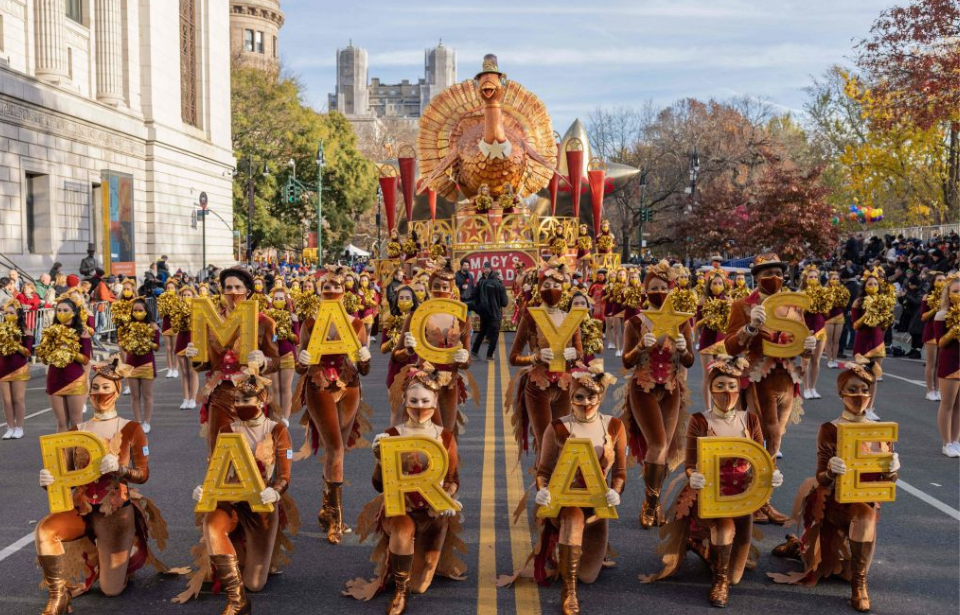The Macy’s Thanksgiving Day Parade is a long-running annual extravaganza, marking the start of the holiday season for viewers across the country.
Besides the appearance of St. Nick himself, one of the most widely anticipated aspects of the parade is the appearance of those enormous balloons.
They weren’t always a part of the parade. When R.H. Macy’s and Co. kicked off the holiday spectacle in 1924, it was a hodgepodge of floats pulled by horses, a couple of marching bands, live animals in cages (courtesy of the Central Park Zoo), Macy’s employees, and random New Yorkers who decided to join the then-six-mile march, from 145th Street in Harlem to Macy’s at Herald Square.
A puppeteer came up with the idea to use balloons
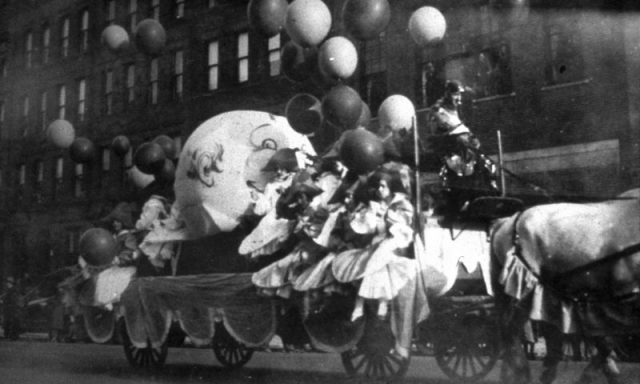
The hard-boiled New York City press wasn’t impressed, with one paper describing the event as “a retinue of clowns, freaks, animals and floats.”
To up the ante, artist and puppeteer Tony Sarg, the creative force behind the parade, wanted to feature something in the parade that everyone, even those spectators standing way back in the crowd, could see. The solution: balloons. Really, really big balloons.
The first balloons made their debut in 1927
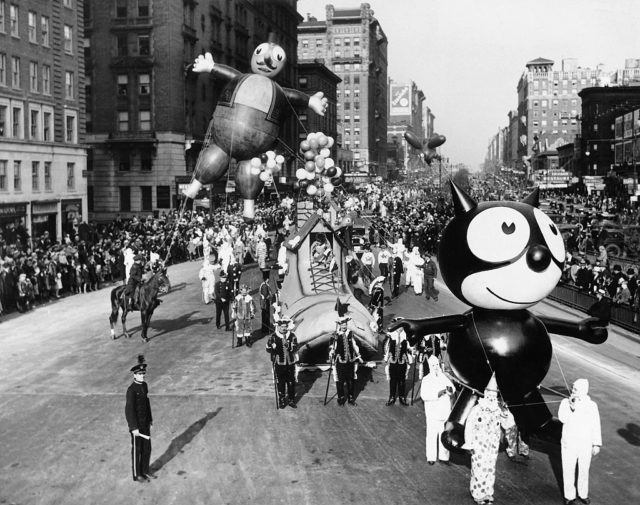
The Goodyear Tire and Rubber Company in Akron, Ohio, came on board, designing Felix the Cat, a toy soldier, and a dragon — all of which made their debut in 1927. Impressive, to be sure, though during the parade Felix would become tangled up in telephone wires and catch fire.
It was the first of several mishaps over the years. Among them, Popeye (1957), whose sailor hat filled with water during that rainy Thanksgiving Day, causing the balloon to veer off course and dump freezing cold water over spectators, and Kermit the Frog (1985), the first balloon to rip open and deflate over the crowd.
The 1932 life-or-death incident
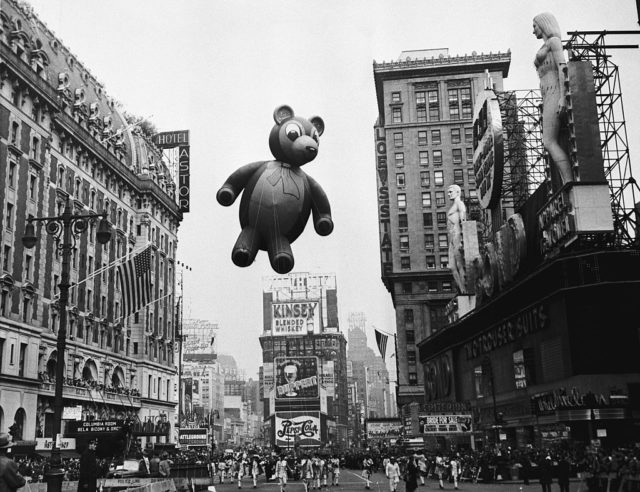
But for sheer drama, nothing comes close to a 1932 incident, when the Macy’s spectacle was upstaged by a life-and-death struggle that took place shortly after the parade ended, in the skies above New York.
Back in the day, the balloons were released into the sky to float away. Macy’s officials — knowing the air space would be filled with planes — issued a stern warning to pilots who might be tempted to use the helium-filled characters for target practice, emphasizing that no reward would be given for, as they put it, “recovering” balloons.
A daredevil pilot

That did not deter a plucky 22-year-old student pilot, Annette Gibson, of Brooklyn. At 4 pm on November 24th, a half-hour after the parade was over and the balloons released, Gibson and her flight instructor, Hugh Copeland, were flying at 5,000 feet above Queens. They spotted the 60-foot, yellow-striped Tom Cat directly in their path. Gibson, ready for some fun, wasn’t about to swerve, announcing, “I think I’ll have a piece of its neck.”
With that, Gibson proceeded to steer the plane straight into the enormous feline. Upon impact, the fabric of the balloon wound itself around the left wing of the aircraft, causing the plane to go into a fierce tailspin toward the ground. Gibson switched off the ignition to prevent the plane from catching fire, if and when it crashed.
As if things weren’t dire enough, the cabin door flew open, with Gibson almost falling out of the plane. (Miraculously, her foot caught in her safety strap and she managed to pull herself back in.)
Tattered remains
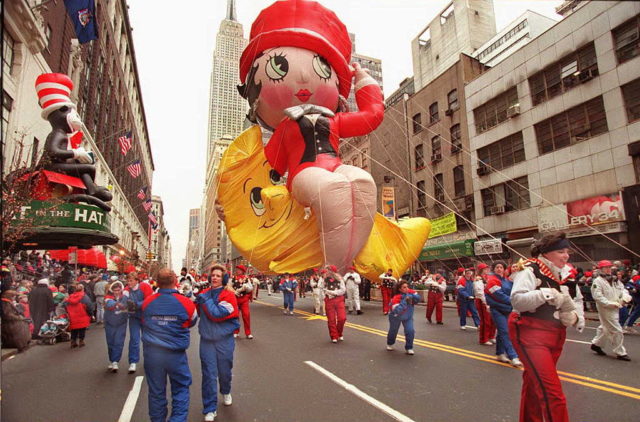
Thousands of people on the ground watched the unfolding events, mouths agape. As the plane continued to dive, the two pilots switched seats, and Copeland grabbed control of the plane. At just 250 feet above the rooftops in Rosedale, Queens, Copeland turned on the ignition and miraculously landed the plane at Floyd Bennett Field in Brooklyn.
The tattered remains of poor Tom Cat floated around the New York City area, souvenir hunters grabbing pieces of the balloon as they sprinkled downward.
As for the intrepid co-pilots, after an investigation by the Department of Commerce, Aeronautics Branch, both Gibson and Copeland were grounded for violating federal regulations forbidding “stunting” over busy areas. Gibson, however, did become front-page news. The New York Times headline read: “Fliers Hit Balloon, Plunge 5,000 Feet.”
More from us: How Eels Almost Became the Thanksgiving Main Dish
The following year, Macy’s put the kibosh on releasing balloons into the wild blue yonder.
